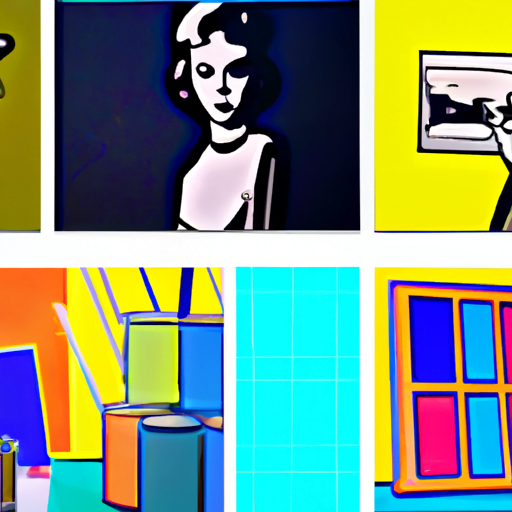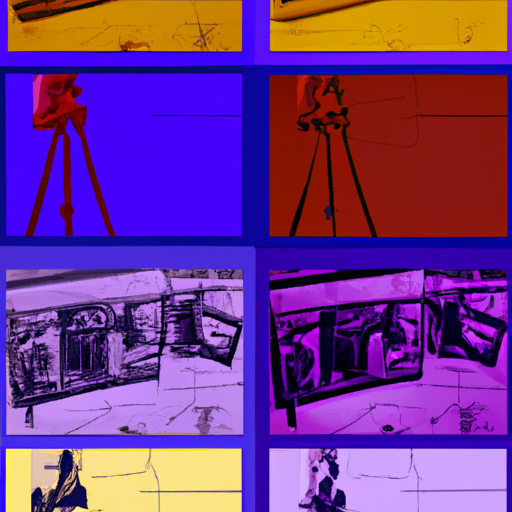
-
Table of Contents
- The Role of Storyboarding in Animation Design
- What is Storyboarding?
- The Importance of Storyboarding in Animation Design
- 1. Visualizing the Story
- 2. Planning the Shots and Camera Angles
- 3. Establishing the Pacing and Timing
- 4. Collaboration and Communication
- 5. Cost and Time Efficiency
- Case Studies: The Impact of Storyboarding in Animation Design
- 1. Pixar Animation Studios
- 2. Walt Disney Animation Studios
- Conclusion
The Role of Storyboarding in Animation Design

Animation design is a complex and intricate process that requires careful planning and execution. One of the most crucial steps in this process is storyboarding. Storyboarding serves as a blueprint for animators, allowing them to visualize and plan out the sequence of events in an animation. It plays a vital role in shaping the final product, ensuring that the animation flows smoothly and effectively communicates the intended message. In this article, we will explore the importance of storyboarding in animation design and how it contributes to the overall success of an animation.
What is Storyboarding?
Storyboarding is a technique used in animation, film, and other visual media to plan out the sequence of shots and scenes. It involves creating a series of drawings or sketches that represent the key moments and actions in a story. These drawings are arranged in a sequential order, allowing the animator to visualize the flow of the animation and make necessary adjustments before the actual production begins.
Storyboarding serves as a visual script, providing a clear and concise representation of the story, characters, and settings. It helps the animator to establish the pacing, timing, and composition of each shot, ensuring that the animation is visually appealing and engaging.
The Importance of Storyboarding in Animation Design
Storyboarding plays a crucial role in the animation design process. Here are some key reasons why storyboarding is essential:
1. Visualizing the Story
Storyboarding allows animators to visualize the story and its progression. By creating a series of drawings or sketches, they can see how the animation will unfold and identify any potential issues or inconsistencies. This visual representation helps in refining the story and making necessary adjustments before investing time and resources into the actual production.
2. Planning the Shots and Camera Angles
Storyboarding helps in planning the shots and camera angles for each scene. By sketching out the key moments and actions, animators can determine the most effective camera angles and compositions to convey the desired emotions and messages. This planning stage ensures that the animation is visually appealing and effectively communicates the intended story.
3. Establishing the Pacing and Timing
Pacing and timing are crucial elements in animation design. Storyboarding allows animators to establish the pacing and timing of each shot and scene. By arranging the drawings in a sequential order, they can determine the duration of each shot and ensure that the animation flows smoothly. This helps in creating a cohesive and engaging animation that holds the viewer’s attention.
4. Collaboration and Communication
Storyboarding serves as a communication tool between animators, directors, and other stakeholders involved in the animation design process. It allows them to share and discuss ideas, make necessary revisions, and ensure that everyone is on the same page. Storyboards provide a visual reference that helps in conveying the intended vision and minimizing misunderstandings.
5. Cost and Time Efficiency
Storyboarding helps in saving both time and resources during the animation production process. By planning and visualizing the animation in advance, animators can identify potential issues and make necessary adjustments before investing in the actual production. This reduces the chances of costly revisions and rework, resulting in a more efficient and streamlined production process.
Case Studies: The Impact of Storyboarding in Animation Design
Several case studies highlight the significant impact of storyboarding in animation design. Let’s explore a few examples:
1. Pixar Animation Studios
Pixar Animation Studios is renowned for its exceptional storytelling and visually stunning animations. The studio places great emphasis on storyboarding as a fundamental step in their animation design process. For instance, in the making of the movie “Toy Story,” the storyboard artists at Pixar created detailed storyboards that served as a guide for the animators, helping them to visualize the story and plan the shots effectively. This meticulous storyboarding process contributed to the film’s success and its ability to captivate audiences worldwide.
2. Walt Disney Animation Studios
Walt Disney Animation Studios is another industry leader that recognizes the importance of storyboarding in animation design. In the production of the movie “Frozen,” the storyboard artists at Disney created detailed storyboards that not only helped in visualizing the story but also played a crucial role in the development of the film’s iconic musical sequences. The storyboards served as a reference for the animators, allowing them to synchronize the animation with the music and create a seamless and immersive experience for the viewers.
Conclusion
Storyboarding is an essential step in the animation design process. It allows animators to visualize the story, plan the shots and camera angles, establish the pacing and timing, facilitate collaboration and communication, and save time and resources. The impact of storyboarding can be seen in the success of renowned animation studios like Pixar and Walt Disney Animation Studios. By investing time and effort into storyboarding, animators can create visually appealing and engaging animations that effectively communicate the intended message. So, the next time you embark on an animation design project, remember the crucial role of storyboarding in shaping the final product.
